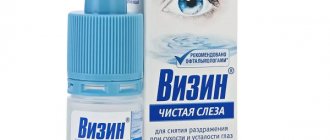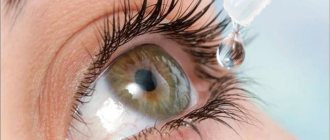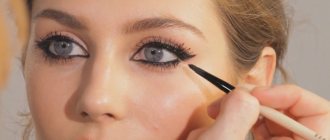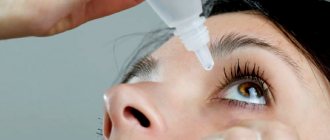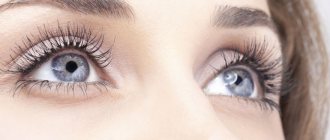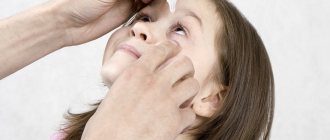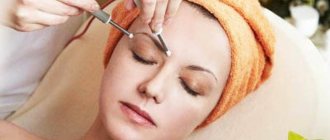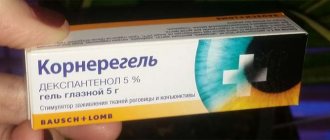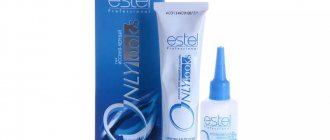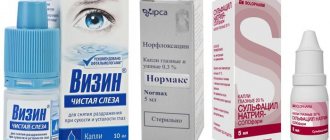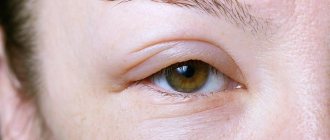Why are antihistamines needed?
Many people believe that these are simple allergy drugs, but they are intended for the treatment of other diseases. Antihistamine drops belong to a group of medications that block immune reactions to certain external stimuli. These include not only allergens, but also viruses, along with fungi and bacteria (infectious agents), and toxins. The medications in question prevent the appearance of bronchial spasms, swelling of the mucous membranes of the nose and throat, redness, and so on. In addition, such medications relieve a person from itching, constriction of blood vessels and muscle spasms.
How do antihistamine drops work?
Mechanism of action
The main protective role in the body is usually played by leukocytes with white blood cells. There are several types. For example, one of the most important is, first of all, mast cells. After the maturation stage, they circulate through the bloodstream, lining up in connective tissue and becoming a certain part of the immune system. When dangerous substances enter the body, these cells release histamine. We are talking about a chemical element necessary for regulating the digestive process, blood circulation and oxygen metabolism. Its excess leads to an allergic reaction.
In order for histamine to provoke negative symptoms, it must be absorbed by the body. For this purpose, there are special receptors called H1, they are located in the inner lining of blood vessels, and, in addition, in the nervous system and smooth muscle cells. So, how do antihistamine drops work? The fact is that the active ingredients of these medications seem to deceive H1 receptors. Their structure and structure are very similar to the substance in question. Medicines compete with histamine and are absorbed by receptors instead, without causing any allergic manifestations.
As a result, the chemical ingredient that provokes unwanted symptoms remains in an inactive state in the blood and is later eliminated naturally. Antihistamine effectiveness directly depends on the volume of “H1” receptors that the substance taken has managed to block. For this reason, it is important to begin treatment immediately after the first allergy symptoms appear.
Review
In this dosage form, local and at the same time systemic drugs are produced. Antihistamine drops intended for oral administration include “Zirtec” along with “Dezal”, “Fenistil”, “Zodak”, “Xizal”, “Parlazin”, “Zaditor”, “Allergonix” and other analogues.
Antihistamine topical nasal drops include products in the form of “Tizin Allergy”, “Allergodil”, “Lecrolina”, “Cromohexal”, “Sanorin Analergin”, “Vibrocil” and others.
Antiallergic eye drops include “Opatanol” along with “Zaditen”, “Allergodil”, “Lecrolin”, “Nafkon-A”, “Cromohexal”, “Vizin”, “Okumethyl” and other synonyms.
Treatment of ocular allergy manifestations
Such antihistamine drops, being a local treatment, are highly effective and at the same time speed of action, since they are able to deliver the drug directly to the area of inflammation. Based on the principle of their effects, they are divided into the following several types: vasoconstrictors, non-steroidal anti-inflammatory, antihistamines, moisturizers and steroidal anti-inflammatory.
Each case of allergy has its own characteristics, and in this regard, the choice of a certain category of medications is the prerogative of the doctor. Against the background of the occurrence of inflammatory processes associated with the eyes, it is better to consult an ophthalmologist.
It will be useful for any patient to learn about how antihistamines in eye drops work, what contraindications they have and side effects. Drugs of different classes can be used separately or together. However, many products contain several ingredients with different effects.
In particular, it is necessary to carefully select drugs that are intended for the treatment of children. There are no special versions of anti-allergy drops that would be suitable exclusively for children; therefore, it is necessary to look at the manual to find out at what age it is safe to use the medicine. In addition, not all allergy medications are suitable for pregnant and lactating women.
How to use drops correctly?
Anti-allergy drops should be properly instilled into the nose:
- First of all, you need to rinse your nose with a special spray based on sea water or saline solution. This is necessary in order to clear the nasopharynx of secretions that prevent direct contact of the medicine with the mucous membrane.
- It is better to put children on the bed; adults can sit on a chair.
- You need to throw your head back. If drops are introduced into the right nostril, then the head should be tilted slightly to the right, and then, by analogy, to the left.
- After administering the drops, you need to wait a little so that the medicine does not pour out of the nostril, but everything is absorbed into the mucous membrane.
- If you are prescribed treatment with several types of drops at the same time, then the vasoconstrictors are instilled first, and then the medicinal ones.
Spray Aqualor intranasal
Eye drops
The components that make up this type of medicine are distinguished by antihistamine activity. This means that they block the effect on the body of a special type of substance, that is, histamines. It is these ingredients that are responsible for the most unpleasant symptoms associated with allergies. There are two types of drugs of this kind. Some histamine H1 receptors are blocked in the tissue, while others do not allow histamines to leave the mast cells outside, where they are formed. The most popular drugs of this type are “Allergodil” along with “Cromohexal”, “Opatanol”, “Lecrolin”, “Spersallerg”, “Allomide” and others.
Separately, it is worth considering the drug “Allergodil”. This is an anti-allergy medicine in the form of eye drops. The mechanism of its action is based on blocking H1-histamine receptors. The active substance is azelastine, which has a prolonged anti-allergenic effect.
Indications for use are prevention with treatment of allergic conditions (non-seasonal and seasonal conjunctivitis). Contraindications are considered to be age under four years and the initial trimester of pregnancy. Apply one drop in each eye twice a day in the mornings and evenings. If necessary, the frequency of use can be increased up to four times.
Antihistamine eye drops are very good at eliminating allergic reactions that occur when the visual organs are irritated. But we must remember that such remedies do not eliminate the cause itself, they only fight its symptoms. Such substances can cause side effects; therefore, before use, it is best to consult a physician who will select the dosage and frequency of use of the medication.
We will consider antihistamine drops for children over one year of age below.
Eye drops for allergies during pregnancy and breastfeeding
The use of eye drops during pregnancy and breastfeeding is prohibited.
Since the active ingredients can be absorbed and negatively affect the health of the fetus, as well as transmitted through breast milk.
In individual cases, pregnant women may be prescribed the following medications for allergies: Lecrolin and Ketafen .
The course of treatment with such medications is prescribed for each patient individually.
Burial rules
First of all, you should adhere to the indicated dosages. You cannot independently change the amount of the drug or interrupt therapy without the doctor’s permission. If the patient uses contact lenses, they must be removed immediately before instillation. They are inserted back ten minutes after the procedure. Some drops need to be stored in the refrigerator; it is important to understand this point by reading the instructions for the product.
Before carrying out the procedure, you must wash your hands thoroughly, then rinse your eyes, removing moisture from the eyelids with a dry towel. If the substance was kept in the refrigerator, then immediately before instillation it will need to be warmed to room temperature.
They should be buried exclusively in a supine position or with the head thrown back. Taking the bottle, you need to turn it upside down, and with the opposite hand you pull the eyelid and you need to look up. Next, you should squeeze out one drop without touching the bottle with your eye, so that it can get into the space between the eyeball and the eyelid. Upon completion of the procedure, you need to close your eye and massage the eyelid a little, however, it is forbidden to squint your eyes or rub the visual organ with all your might.
Antihistamine drops for children under 1 year
Allergic reactions appear sooner or later in every baby, and babies experience multiple symptoms due to this. But, nevertheless, secretion from the nasal passage along with lacrimation, redness, various swelling and rashes force parents to spend sleepless nights. It is worth emphasizing that the above signs are not at all the most dangerous, which cannot be said about a bee sting, which causes severe swelling and is fraught with asphyxia.
In order to reduce the effect of allergens on the body of newborn babies, you can use antihistamine drops for children. If the illness occurs during a period when it is not possible to call a doctor, then the first aid is sedative or sedative medications. Among the most common children's antihistamine drops is Suprastin, which is as safe as possible for all infants. In addition, Fenistil is considered very effective, but not safe enough. The use of antihistamine drops for children from birth “Fencoral” is allowed.
A good solution in the fight against allergic manifestations in newborns and children up to one year old is to have various herbal drops with calendula and chamomile in your home medicine cabinet. Among other things, it is recommended to use Furacilin for newborns, but only if the baby has eye conjunctivitis.
Antihistamine drops for infants should be used with great caution.
Which groups of nasal drops help with allergic nasal congestion?
The category of chronic inflammatory diseases of the nasal mucosa includes allergic rhinitis, which develops due to the body's increased sensitivity to external irritants.
For example:
- pollen;
- animal hair;
- dust;
- Food.
Antihistamines, which contain receptor blockers responsible for the development of an allergic reaction, are highly effective in the fight against allergic rhinitis. When used correctly, nasal drops help quickly eliminate lacrimation, swelling of the mucous membrane, severe itching and nasal congestion. Many antihistamines can be used to treat children from the first days of life.
The basis of such drops may include the following components:
- naphazoline nitrate;
- dimethindene;
- cetirizine;
- Levocabastine.
The following antihistamines help cope with seasonal allergies:
- Sanorin-Analergin.
- Vibrocil.
- Allergodil.
Nasal drops for allergies (the most effective medications help improve breathing, eliminate swelling of the nasal sinuses and are available in 2 dosages - for adults and children) should have a vasoconstrictor effect if the disease is severe.
In this case, the appropriate drug must be selected from 3 groups:
- Nasal drops based on xylometazoline. The positive effect from the use of these drugs lasts for 10 hours. The following nasal drops have a vasoconstrictor effect: Rinonorm, Galazolin, Rhinorus, Dlyanos, Xilen.
- Medicines based on naphazoline. The drugs begin to act within 1-2 minutes. after use, but the positive therapeutic effect lasts for a maximum of 3 hours. If the mucous membrane is hypersensitive to the composition of nasal drops, nosebleeds may occur. Naphazoline-based drugs are addictive, which is why the therapeutic course should last a maximum of 5 days. This group of medicines includes: Rinazolin, Naphthyzin, Imizin, Sanorin.
- Drops of long-term action (up to 12 hours) are produced based on oxymetazoline Nasal drops Sialor, Nazivin, Vicks and Nazol have the least aggressive effect on the body, and the likelihood of adverse reactions is minimized.
Hormonal medications help cope with even the most severe allergic reactions. The high effectiveness of pharmacological agents is due to the presence of glucocorticosteroids in their composition.
Hormonal nasal drops have the following benefits:
- Not addictive.
- You only need to use the nasal remedy once a day.
- The components of hormonal drugs accumulate in the body, due to which the positive therapeutic effect persists for 3 days after completion of treatment.
- Nasal drops for allergic rhinitis with glucocorticosteroids can be prescribed to children from 2 years of age.
- Nasal hormonal agents are characterized by a local principle of action, which eliminates the possibility of negative effects of active and auxiliary components on the functioning of internal organs.
To achieve the maximum therapeutic effect, 4-5 days should pass after using nasal drops based on glucocorticosteroids. The following drugs are in greatest demand: Avamis, Flixonase, Nasonex.
If the patient is bothered by a congestive runny nose and difficulty breathing due to swelling of the mucous membrane of the nasal passage, then broad-spectrum decongestants can be used. Drugs in this category reduce the lumen in the blood vessels and also reduce the intensity of muconasal secretion production.
The active components of decongestants may include:
- Naphazoline.
- Tetrizoline.
- Xylometazoline.
- Oxymetazoline.
A positive therapeutic effect is achieved within 3-5 minutes. after using the nasal remedy. The category of decongestants includes Rinomaris, Otrivin.
Homeopathic medications have a natural composition and have a gentle effect on the mucous membrane of the nasal cavity. But such drugs act slowly, which is why they are rarely used for allergic rhinitis.
The herbal components present in the composition can enhance the functioning of histamine receptors. It is recommended to use homeopathic medicines in combination with other medications and only if the patient is not allergic to the components of the nasal remedy. The following medications are in greatest demand: Pinosol, Euphorbium Compositum.
If allergic rhinitis is accompanied by a bacterial infection, then antibacterial nasal drops containing broad-spectrum antibiotics should be used for treatment. But first you need to consult with your doctor, since in case of a viral infection, the use of such nasal medications will be ineffective.
In allergology, the following antibacterial drops are in greatest demand:
- Polydexa.
- Isofra.
- Bioparox.
No less effective for allergic rhinitis are cromones, which reduce the intensity of histamine production, which is due to the strengthening of the walls of mast cells responsible for the synthesis of B-imidazolyl-ethylamine. This category includes drugs based on nedocromil sodium and sodium cromoglycate. Components of medications accumulate in the body, which is extremely important for preventing the development of seasonal exacerbations of allergic rhinitis.
Tested cromons:
- Ifiral.
- Cromosol.
- Cromohexal.
Drops and sprays: names
Let us now consider the most popular and effective sprays and drops for allergies:
- One of them is the drug “Okumetil”. These are, first of all, vasoconstrictor drops that reduce swelling with redness of the eyes, as well as eliminate other symptoms. According to the manual, constant use leads to fairly rapid addiction. The fact is that after withdrawal, symptoms may occur again.
- The drug "Cromohexal" is an antihistamine eye drop, suitable for the treatment and prevention of chronic pathologies (for example, keratoconjunctivitis). The main active ingredient in this case is cromoglycic acid, which inhibits the occurrence of certain allergic reactions and prevents their subsequent development. This drug eliminates dryness and irritation, it is very effective in cases of fatigue and eye strain.
- A product called Allergodil is used to relieve the main manifestations of allergic eye reactions. According to the instructions, this medication has a long-lasting and at the same time very powerful antihistamine effect. Among other things, the medicine is well tolerated, without causing effects even with prolonged treatment.
- Drops with an antihistamine effect "Vizin" eliminate allergy symptoms within ten minutes after treatment. The effect usually remains at the same level for twelve hours. “Vizin” is a safe medicine that eliminates the main symptoms of the disease and minimizes the risks of certain side effects.
- Opatanol is an antihistamine that relieves allergy symptoms. Its effect is based on the process of suppressing the release of biological active substances that provoke the development of foci of inflammation.
Antihistamine nasal drops and sprays can be purchased at any pharmacy.
List of eye drops for allergies
Even if the symptoms are severe, the dosage or frequency of administration cannot be increased. Not all medications work immediately after use. The course of treatment must be completed in full despite the fact that the unpleasant sensations disappeared after 2-3 days, otherwise they will recur. If the doctor has prescribed several medications, you should leave a gap of 15 minutes between instillations. If the condition worsens after use, you need to consult a doctor again - the choice of antiallergic drops is quite large and you can always choose a replacement.
Azelastine
The active substance is azelastine hydrochloride, a derivative of phthasalion. It is prescribed for the prevention and relief of allergic reactions, regardless of the cause, including seasonal hay fever, eliminates unpleasant symptoms - itching, irritation, redness, swelling, relieves redness. Azelastine suppresses the release of histamine and has a prolonged effect. In case of overdose, sedation is possible, especially in children. Price - from 300 rub.
Allergodil
A long-acting antiallergic drug that blocks histamine H-1 receptors. The main active ingredient is azelastine hydrochloride. Allergodil can be used for preventive and therapeutic purposes for allergies, regardless of etiology. Contraindications: 1st trimester of pregnancy and age under 4 years. Duration of use - up to 1.5 months. The downside of the drug is that side effects often appear: itching, irritation, redness of the eyes. During treatment, you will have to give up contact lenses and switch to glasses. Price - from 412 rubles.
Allergoferon
Eye drops are prescribed for the treatment of seasonal allergic rhinitis, hay fever, in the acute stage, when severe symptoms appear. Active ingredients: betamethasone, recombinant human interferon alpha-2b. It has a pronounced immunomodulatory, antiallergic, antiexudative effect.
After installation, the release of inflammatory mediators slows down, the synthesis of lipomodulin, an inhibitor of phospholipase A, increases. The metabolism of arachidonic acid, which stimulates the release of prostaglandins, is inhibited. The production of inflammatory exudate is reduced, the migration of macrophages slows down, thereby suppressing the development of the inflammatory process. Interferon increases local immunity, which accelerates remission of the disease.
Peculiarities of application: the frequency of instillations is reduced gradually, the therapeutic course is short-term - no longer than 7 days. Administration not only into the conjunctival sac, but also into the nasal passages, 1-2 drops up to 3 times a day in the severe stage, and once upon termination of treatment, based on the therapeutic effect. Price - from 229 rubles.
Read more List of nasal drops during pregnancy
Opatanol
Antihistamine eye drops with a pronounced effect. When used in therapeutic doses, they do not cause side effects. The active substance is olopatadine hydrochloride, absorption into the bloodstream is low. Opatanol is prescribed for the treatment of patient allergic conjunctivitis for patients over 3 years of age. After instillation, it slows down the release of active components that stimulate exudation - the release of fluid through the walls of capillaries, or proliferation - the growth of connective tissue - cells of parts of the eye.
During pregnancy or lactation, use in exceptional cases, taking into account the risks for developing organisms. A 5 ml bottle sells for 510 rubles.
Visallergol
This is an Indian generic of Opatanol antiallergic drops with the same active substance. Inhibits the activity of receptors excited by the release of histamine, suppresses the appearance of allergic symptoms. Visallergol is prescribed for hay fever and is included in the therapeutic course for rhinitis of various types in order to prevent the development of conjunctivitis caused by the treatment of infectious diseases. Indications and contraindications are the same as Opatanol, but the price is cheaper - from 400 rubles. per package.
Visine
The drug contains tetrizoline from the group of adrenergic agonists. The substance has a pronounced vasoconstrictor effect, reducing redness (hyperemia) and swelling. The use of Visin eliminates congestion in the soft tissue parts of the visual system, dilates the pupil, increases the outflow of intraocular fluid, and prevents the development of inflammation of the cornea. The recommended dosage is 1 drop 2 times a day.
The drug is prescribed not only to eliminate the symptoms of individual intolerance, but also for pathologies of the lens, vitreous body, retina, optic nerve, and refractive error. An overdose is dangerous - in severe cases, arrhythmia appears, most often bradycardia. Cost - from 320-390 rubles.
Vizin alert
Available in the form of a homogeneous white suspension. The active substance of the composition is levocabastine, a blocker of H1-histamine receptors. Eliminates symptoms of allergic conjunctivitis within 5 minutes after administration. Shake before instillation. Contraindications: age under 12 years, pregnancy or lactation, use of contact lenses. Price - from 400 rub.
Dexamethasone
Eye drops containing the active ingredient dexamethasone, a steroid of synthetic origin. Suppress the production of histamine, stop the development of inflammatory processes. An ophthalmic agent is prescribed for allergic conjunctivitis with severe symptoms in the absence of timely treatment, for keratitis, uveitis, blepharitis, mechanical, chemical and thermal damage to the eyeball.
A weakly concentrated solution (concentration of the main component is 0.1%) cannot be used for eye diseases of an infectious nature, epithelial defects, trachoma, or the appearance of symptoms of individual intolerance. Renal and liver failure are not absolute contraindications, but if there is a history of them, the consequences of Dexamethasone instillation should be monitored by an ophthalmologist. The drug is cheap - the cost is from 40 rubles per 10 ml.
Dexatobropt
Ophthalmic drug with a complex composition. Antiallergic and anti-inflammatory effects are provided by the corticosteroid dexamethasone and the antibiotic tobramycin.
The first component has a desensitizing effect, suppresses individual intolerance caused by the use of simultaneously used pharmacological agents, suppressing the production of histamine, a mediator of inflammation.
Tobramycin, with a broad spectrum of action, disrupts protein production and the permeability of the cytoplasmic membrane of the microbial cell. Active against gram-positive and gram-negative pathogenic flora - cocci, beta-hemolytic species of group A, some strains of Streptococcus pneumoniae.
Dexatobropt is prescribed for blepharitis, blepharoconjunctivitis, conjunctivitis, keratitis, iridocyclitis, for the prevention of cataracts after operations on the eyes and their appendages. Contraindications: fungal and viral infections, superficial forms of keratitis, acute purulent-inflammatory processes, childhood, pregnancy, lactation. Price - from 250 rub.
Cromohexal
Swiss eye drops belong to the group of mast cell membrane stabilizers. The drug Cromohexal is prescribed for allergic conjunctivitis and keratoconjunctivitis, dry eye syndrome, visual fatigue, and after mucosal injuries. The active component - sodium cromoglicate - prevents calcium ions from penetrating mast cells, stops degranulation, stimulates the release of leukotrienes, histamine, prostaglandins, etc. Long-term use is not recommended. The maximum duration of instillations is 4 weeks.
The action begins 1.5-2 weeks after the start of treatment, so it is often prescribed for preventive purposes. In pediatric practice, it is used from 2 years of age, but up to 5 years it is prescribed with caution, analyzing the effect on the visual system. Patients need medical supervision if they have a history of renal or liver failure. The average price is 90-110 rubles.
Read more How to get rid of bruises and swelling in the eye area
Ketotifen
This is the cheapest anti-allergy drug - price starts from 30 rubles. for 5 ml of solution. The active ingredient is ketotifen fumarate. Blocks the production of histamine, relieves central nervous system stimulation, helps stabilize mast cell membranes, and stops the inflammatory process. Ketotifen is used to treat allergies in patients over 12 years of age.
Combinil
These eye drops are used for the treatment and prevention of conjunctivitis, inflammation of the uvea and cornea, blepharitis caused by various causes, and after operations on the organs of vision. The drug suppresses the development of an allergic reaction and stops the activity of pathogenic microorganisms. The active substances of the complex composition are a broad-spectrum antibiotic ciprofloxacin and dexamethasone from the group of corticosteroids.
Contraindications: tuberculosis of the organ of vision, fungal infection, individual intolerance, pregnancy and lactation. Absorption into the bloodstream is negligible, systemic side effects are rare. Combinil is not used as a remedy for allergies, but it helps to avoid irritation of parts of the eye when treating the underlying disease. Can be used in otorhinolaryngological practice. Price: 420 rub. for 5 ml.
Lecrolin
The active ingredient in the ophthalmic solution, sodium cromoglycate, blocks the release of histamine. Stops the development of conjunctivitis, keratitis, keratoconjunctivitis in children over 4 years of age and adult patients. Lecrolin is prescribed for preventive and therapeutic purposes, used to protect against irritation caused by the negative effects of dust, chemicals, and pollen that saturate the air masses. During treatment, you need to temporarily replace contact lenses with glasses. Cost - from 120 rubles.
Maxidex
A desensitizing antiallergic opaque solution of white or slightly yellowish color is used for the prevention and treatment of allergic inflammatory processes of the organ of vision. The main component is dexamethasone, from the group of corticosteroids. The drug is used in the treatment of iridocyclitis, acute and chronic iritis, to accelerate regeneration after thermal or chemical burns of the cornea, and surgical operations.
Contraindications to treatment: diseases of infectious etiology, inflammatory purulent processes in epithelial tissues and the cornea, with individual intolerance to aspen or auxiliary components. Deterioration of the condition is considered as side effects: slower healing, rapid development of glaucoma, if it has already been diagnosed in the patient. Maxidex must be prescribed by an ophthalmologist, the cost is from 350 rubles.
Lotoprednol
Eye drops with a complex composition, the active ingredients are lotoprednol, a corticosteroid, and the antibiotic tobramycin. They have a pronounced antipruritic and anti-edematous effect. The duration of treatment is no longer than 2 weeks. Contraindications to instillations: dry eye syndrome, cataracts, glaucoma, age under 7 years, pregnancy, lactation. Dosage and frequency of administration are at the discretion of the attending physician. Price - from 200 rub.
Sigida DUO
The active ingredients are diphenhydramine hydrochloride and naphazoline nitrate. The first component has an antiallergic effect, reduces itching, eliminates bleeding; the second - constricts blood vessels, relieves swelling, and relieves hyperemia. Prescribed for allergic conjunctivitis caused by external irritants, drug therapy, hay fever, infectious processes, as an adjuvant. The course of treatment is short-term, no more than 5-7 days, further use is addictive. The price for 30 doses is 515 rubles, 10 - from 235. There are no preservatives in the composition, side effects are rare.
Tobrex
These drops are not antiallergic. They are prescribed for conjunctivitis, the impetus for the development of which was individual intolerance to drugs, flowers, and chemicals. The active ingredient is tobramycin, an antibiotic from the aminoglycoside group. Tobrex is administered in a therapeutic course for severe infectious lesions: meningitis, sepsis, inflammation of the respiratory or urinary systems.
In case of infectious processes, it eliminates redness and irritation and increases local immunity of the visual organs. The dosage and frequency of instillations is determined for each patient individually, based on the clinical picture, the patient’s age, and perception of the drugs. Average price - 180 - 250 rubles.
Okumetil
Ophthalmic drops with complex action. Active ingredients: zinc sulfate, diphenhydramine hydrochloride, naphazoline hydrochloride. Okumetil constricts blood vessels, suppresses inflammatory processes, increases the viscosity of the tear film, eliminates swelling and irritation. Prescribed for hay fever, allergies of various types, and eye irritation of an infectious nature. Quickly relieves redness, foreign body sensation, and relieves fatigue. The average cost is from 251 rubles.
Read more Coronavirus infection in China - 2021
Olopatallerg
Eye drops with a pronounced selective antihistamine selective antiallergic effect due to the active component - olopatadine hydrochloride, a histamine antagonist. Suppresses the release of inflammatory cytokines produced in conjunctival epithelial cells. The drug does not change the diameter of the pupil. Olopatallerg is prescribed for seasonal hay fever and can be combined with other antiallergic drugs. Price - from 340 rub.
"Tizin alert"
It is a new generation product made in Israel, based on levocabastine.
The active substance is a blocker of H1-histamine receptors. It suppresses the production of histamine and other allergy mediators, reducing the sensitivity of body cells to them.
Quickly relieves allergic rhinitis - discharge, itching, congestion, sneezing. Do not use in children under 6 years of age.
The best medicines
The selection of funds from the described category should be carried out exclusively by a specialist. Some people are best suited to first-generation medications due to the sedative effect required; other people do not need this effect at all. Similarly, doctors recommend the release form depending on the existing symptoms. Systemic drugs are prescribed for severe manifestations of the disease; in other situations, local remedies can be used.
Types of anti-allergy nasal medications
Allergy medications that are used to treat the nasal mucosa, depending on the mechanism of action, are divided into:
- vasoconstrictors (vasoconstrictors) - reduce nasal congestion;
- antihistamines – neutralizing biogenic amine, eliminating the cause of allergic rhinitis;
- hormonal (glucocorticosteroids) – their action is aimed at correcting the production of bioactive substances that serve as mediators of allergic reactions;
- immunomodulating - contribute to the normalization of the immune system;
- combined action - simultaneously have an antihistamine, vasoconstrictor, anti-inflammatory and decongestant effect.
Local antiallergenic nasal preparations are available in the form of drops and sprays. Sprays are considered more advanced in terms of ease of use, delivery and uniform distribution of the active substance. The presence of a dispenser on the spray bottle allows you to accurately adhere to the dosage, and thereby reduce the likelihood of side effects. The advantage of nasal drops is their lower cost compared to sprays.
It is important to know! For children under 1 year of age, the use of nasal sprays is not recommended.
This is explained by the structural features of the child’s nasopharynx. When irrigating the nasal mucosa, the medicine from the spray bottle is supplied under pressure. When the product is injected, some of the mucus can penetrate from the nasal passage into the auditory tubes, which in young children are located very close to each other. This can provoke an inflammatory process in the ear - otitis media.
How long can patients take antihistamine drops for children and adults?
The duration of therapy directly depends on the generation of medications and the severity of pathological symptoms. The doctor must decide how long a person should be treated with antihistamines. Some drops can be used for no more than six to seven days. Modern pharmacological agents belonging to the latest generation are less toxic, so their use is allowed for one year. It is extremely important to consult a doctor before taking it. Antihistamines can accumulate in the body, causing poisoning. Some patients subsequently develop allergies to these medications.
Price
| Types of drops | Name of drops | average price |
| Vasoconstrictors | Vizin alert | 250 rub. |
| Octilia | 290 rub. | |
| Okumetil | 170 rub. | |
| Vial | 200 rub. | |
| Antihistamines | Allergodil | 520 rub. |
| Cromohexal | 120 rub. | |
| Opatanol | 370 rub. | |
| Ketotifen | 70 rub. | |
| Anti-inflammatory | Acular | 200 rub. |
| Dexamethasone | 100 rub. | |
| Levomecithin | 40 rub. | |
| Diclofenac | 50 rub. |
You should not self-medicate and purchase eye drops for allergies without consulting your doctor, and also use analogues of prescribed medications. After all, even one replaced component in a drug can not cure, but harm.
How often can I take it?
Most manufacturers of the described products produce such medications in a convenient dosage, which involves use once a day. The question of how to use antihistamines, depending on the regularity of the occurrence of negative clinical manifestations, is decided with the doctor. This category of medications is classified as symptomatic treatment methods. They must be used whenever signs of the disease occur each time.
New antihistamines can be used as prophylaxis. If contact with the allergen cannot be avoided (we are talking about poplar fluff, ragweed flowering, etc.), you should use the medicine in advance. Preliminary use of antihistamines will not just soften negative symptoms, but eliminate their occurrence. H1 will be completely blocked by this point, when the immune system begins to launch a protective reaction.
We reviewed antihistamines in drops for children and adults.
Using eye drops
After consulting with a doctor and his approval of suitable medications, you must purchase them at the pharmacy and start taking them in accordance with the course prescribed by the doctor. Typically, antihistamine eye drops are taken several times a day. If the patient wears contact lenses, it is better to replace them with glasses while the medicine is instilled. If the medicine is prescribed to a child, it is better for an adult to administer the drops. If an adult is treating himself, he needs to be extremely careful not to injure his eye.
- First of all, we need to repeat once again that absolutely any medications should be prescribed only by the attending doctor. It is also important to follow the rules of administration: do not change the prescribed dosage and do not stop treatment before the prescribed date.
- If you have been prescribed several similar medications at the same time, use them strictly one at a time and maintain certain intervals between taking different medications. You should not replace the drops prescribed by the doctor with other, possibly more economical medications. Health is the most precious thing we have and it is highly undesirable to skimp on it.
- In most cases, eye drops should be stored in the refrigerator, but not at very low temperatures. Otherwise, normal absorption of the drug will be disrupted and irritation of the mucous membrane may occur. Before use, keep the drops for at least 30 minutes at room temperature, and then instill them.
- Some eye drops may cause burning or other side effects. This is normal, but if the discomfort becomes stronger and does not leave you for several days, stop using the product temporarily and go to the hospital immediately.
The instillation procedure includes several steps that must be strictly followed. First you need to wash your hands thoroughly with soap. Then you need to carefully open the bottle of eye drops. Use your fingers to pull the lower eyelid forward. Then place a few drops under it without touching the eye. After this, the lower eyelid can be released and gently massaged. It is not recommended to wash the tip of the bottle before closing the bottle with drops. If the patient is going to put on contact lenses again, you need to wait 10-15 minutes until the medicine is absorbed.
The dosage of the medicine, frequency of instillation, side effects and other characteristic features of the drug can always be found out from the instructions attached to it. If the box with instructions is lost, you can always find it on the Internet, indicating the name of the antihistamine drops. As a last resort, the necessary information can be obtained from a pharmacist at a pharmacy when purchasing medications. Depending on the formula and manufacturer, the price for antihistamine eye drops may vary.
You can learn how to properly apply eye drops from the video:
Drops against allergies when using contact lenses
Ophthalmologists do not recommend wearing lenses during seasonal allergies, but if it is impossible to refuse them, you should give preference to soft contact lenses. And it is imperative to maintain their hygiene, avoiding additional sources of irritation getting into the eyes.
Before using antiallergic or complex eye drops, it is advisable to remove the lenses; you can put them back on a quarter of an hour after the procedure. In cases where there is significant irritation and tearing, ophthalmologists recommend stopping wearing lenses until the allergy symptoms completely disappear.

